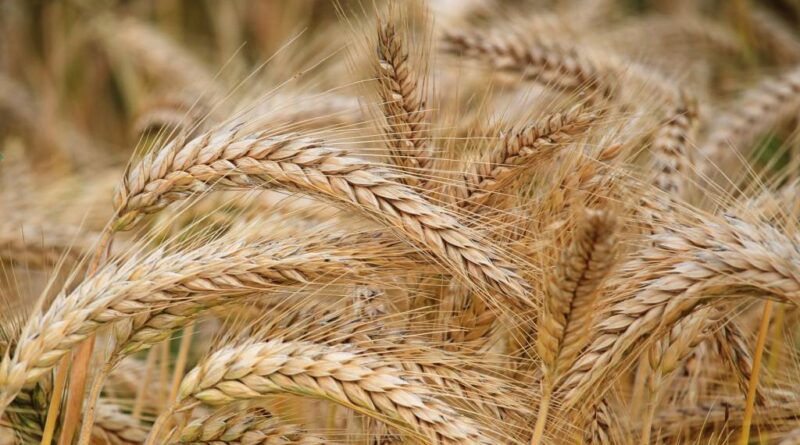Punjab farmers reap twin bounty: Higher yield, robust procurement
By Sandip Das
Ahead of the Lok Sabha elections in the state, Punjab farmers – the most vocal and organised among India’s cultivators – are a happy lot. Two things are working in their favour at the moment: higher wheat yield, and robust procurement of the key rabi crop at attractive minimum support price (MSP). Unlike in many other states, for Punjab’s land-owning farmers, most of who grow cereals in their own holdings, the current MSP of `2,275/quintal is almost 2.5 times the cost.
With prospects of record output and procurement expected to gather further momentum over the next few weeks, the government’s wheat stocks, which had fallen to the buffer level recently, may soon be replenished.
At 7%, MSP increase for wheat in the current season was the steepest in eight years. Moreover, for farmers in Punjab, which account for almost half of the wheat MSP operations, crop yield has recovered from the low levels seen in the last two seasons by a quarter. The extended winter helped grain formation.
At Rajpura mandi, wheat procurement by the agencies run by the state government has just picked up pace after a slight delay caused by the prolonged cool weather in northern India. Amarjeet Singh, who has sown wheat in 50 acres in Kotla village in Patiala district, estimates the yield of his fields this season at 23 quintal/acre. With a projected income of `52,000/acre against the gross inputs cost of `15,000/acre, farmers like Singh are confident of record remuneration. “In the last two years, the crop was hit by unseasonal heatwave (2022) and rains during the maturity stage, while this year prolonged winter has helped grain formation,” Singh told FE.
The yield of wheat fields, according to a number of farmers this reporter spoke to in Punjab and Haryana, had dropped to 17-18 quintal/acre in 2022, and stood at 19-20 quintal/acre last year. This year, however, average yield is in seen at 22-23 quintal/acre.
Farmers from Punjab were at the forefront of the year-long agitation in 2020-21 that forced the Narendra Modi government to withdraw the controversial new laws for agriculture marketing. In February this year, a section of them went on the warpath again, renewing their demand for legal guarantee for MSP, but they were blocked by the Haryana Police at the Shambhu border.
Strong MSP operations and remunerative prices could, however, further dampen the prospects of crop diversification in Punjab and Haryana. Farm economists have long been advocating a shift to less water-intensive crops by farmers in the two states.
At Punjab’s Khanna mandi, Asia’s biggest grain market, and at Karnal, Haryana, this reporter saw huge piles of wheat being brought in by farmers in tractors. However, till Thursday, procurement of the grain across the country crossed 6 million tonne, down 36% on year. This, however, was merely because of the delay in harvesting. “These are early days, the procurement is bound to pick up over the next 10 days,” Manjinder Singh, secretary, market committee, Khanna, said. He added that private trade is also buying wheat at many places at `5/quintal above the MSP.
According to food ministry officials, Punjab is expected to contribute a record 13 MT of wheat to central pool stock (30 MT target) in the current marketing season. This would help bolster the stocks which has plummeted to a 16-year low of 7.5 MT at the start of this month.
To curb rise in prices, the government had aggressively sold a record 9.6 MT of wheat from its stock in the open market last fiscal.
The spurt in purchase of wheat by the private traders in Punjab and Haryana follows the state government’s decision to exempt the flour millers and processors from mandi tax and rural development cess, respectively.
In Karnal, Haryana’s biggest grain mandi, 46,256 tonne of wheat has been procured by the government agencies so far. “Crop this year is robust, although there has been delays in harvest,” Sanjiv Sachdeva, secretary, market committee, Karnal, said.
According to Gyanendra Singh, director, Indian Institute of Wheat and Barley Research, based in Karnal, wheat output this year 2023-24 crop year (July-June) may cross the current estimate of 114 MT. He cited factors such as record sown area at 34 million hectare, longer winter season and absence of disease outbreak for the sanguine forecast. “More than 90% of current wheat varieties are climate-resilient, heat-tolerant varieties while 60% have been introduced in the last five years,” Singh said.
This article has been republished from The Financial Express.

